Estimated reading time: 11 minutes
Are you wondering where to buy products to sell on Amazon? Of course, achieving high profits on Amazon requires selecting the right products. In this article, we will clarify everything and guide you toward making the right choices.
We have also published a data-rich article about the “Best Items to Flip on Alibaba,” which I highly recommend you read!
How to Find the Best Products to Sell on Amazon – Get it at a glance
This article will go through some actual solutions to common challenges a seller faces while sourcing products to sell on Amazon:
- Overwhelmed with how to find reliable suppliers?
- Afraid of inconsistent product quality and how that may hurt your brand?
- Concerned about high defect rates hurting your profit margins?
- Uncertain how to surmount communication barriers and build trust with overseas suppliers?
- Want to struggle less in finding a product with demand and good profit potential?
If any of these resonate with you, this guide will offer actionable steps and proven strategies that will drive you to success in sourcing the best products for your Amazon business. Read on to get rid of these pain points and unlock new opportunities!
How to Choose the Right Products to Sell on Amazon
However, it is crucial to determine what products should be purchased before identifying where to make the purchase. Understand your market and evaluate trends, buyers’ feedback, and competitors in your product type.
Consider the opportunities to have a unique selling proposition and look for the markets that have not been explored enough.

Below are Some Factors We Recommend You Consider:
- Market Research: Utilise resources such as Amazon’s Best Sellers list to identify hot-selling and trending gifts. Know what customers are looking for, and what customers are buying.
- Analyse Competition: It will be important to identify those products that have enough demand to survive but are not crowded by too much competition. Open Amazon and see how many other sellers offer the same product and what their clients have to say about it.
- Consider Profit Margins: Consider the cost of the product, the fees charged by Amazon, shipping costs, as well as other costs, to make sure the product you are selling will be profitable. To get accurate calculations, use the Amazon FBA calculator.
- Legal and Compliance Check: There are two paths to ensure that the products do not violate any legal or compliance issues with Amazon. There are certain categories of products today that need special certification or approval to be listed on the site.
- Analyse Seasonality and Trends: Be aware of the products that are often sold in a particular month or quarter. While they may do great business during that period, they do not generate business uniformly.
- Plan for Scalability: Consider if you will be able to scale the business when the product takes off. Are you capable of managing the rise in orders, and is the market big enough for further expansion?
- Align with Your Interests and Knowledge: The second essential factor involves selling products in a particular area of specialisation or interest because here you’re likely to deal with customers more openly and therefore understand their needs better.
Note: Please pay attention to customer reviews under each product detail, as these come from real users, and their feedback will be your best reference.
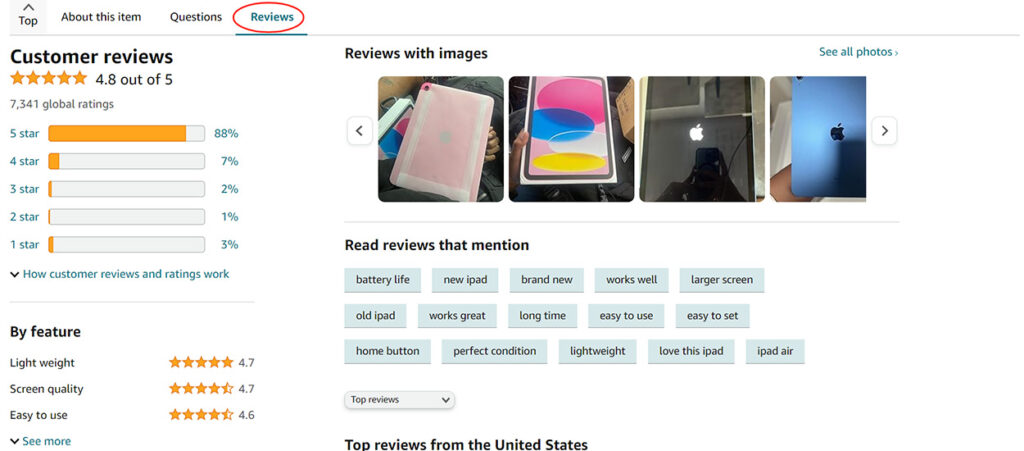
Where to Buy Products to Sell on Amazon?
After selecting the products to offer on Amazon, the next step is to source these products. Creating a plan on how to source products for Amazon selling is not a big challenge, but the major question is where to get the products for sale on Amazon. Please do not worry, please continue to read the following.
Leveraging Online Marketplaces
Online B2B platforms can also be helpful when it comes to discovering a variety of goods, where to buy them and at what cost.
a) Alibaba:
- Best for sourcing bulk products directly from manufacturers at competitive prices.
- Tips: Use Alibaba for private-label products. Negotiate for better prices and terms, especially for larger orders. Ensure to verify the credibility of the suppliers. When looking for budget-friendly products with lower minimum order quantities (MOQs), platforms such as DHgate or 1688 are excellent alternatives.
- Pro Tip: Before placing any order, take the time to read customer reviews and request samples to ensure the product quality meets your standards.
b) AliExpress:
- Best for buying smaller quantities of products, ideal for testing the market.
- Tips: Use AliExpress for dropshipping or to order samples before committing to larger orders. The platform offers a wide variety of products.
c) eBay:
- Best for Retail arbitrage, buying unique or discounted items in smaller quantities.
- Tips: Look for clearance items, auctions, or bulk deals to resell on Amazon. eBay is also good for finding suppliers that offer free shipping.
d) DHgate:
- Similar to Alibaba and AliExpress, best for sourcing, both products are available in small and large amounts.
- Tips: Make sure you are providing a working shipping rate in comparison to other platforms. DHgate is also good for dropshipping.
Comparison of Online Sourcing Platforms in China
Choosing the right platform to source products is crucial. Here’s a quick comparison of major platforms to help you decide:
| Platform | Best For | MOQ (Minimum Order Quantity) | Shipping Time | Key Tips |
|---|---|---|---|---|
| Alibaba | Bulk sourcing for private labels | High | Long | Verify suppliers; negotiate terms. |
| AliExpress | Testing new products or dropshipping | Low | Medium | Great for smaller quantities. |
| DHgate | Small-scale and bulk sourcing | Medium | Medium | Check competitive shipping rates. |
| eBay | Unique or discounted items | Low | Short | Look for auctions and bulk deals. |
Concerning the suppliers, one has to be very selective in working with those who are reputable, have a good track record, and are also very responsive.
Contact several suppliers to discuss their price offers as well as product quality, delivery methods, and extra services provided by the selected company. It’s advised to request product samples before ordering a larger stock to check the quality of the product.
If you want to have a healthy profit margin from selling your products on Amazon and ensure minimal risks, China will be your ultimate choice. Whatever the case, you stand a good chance of facing potential losses in the Chinese market without finding the right supplier and ensuring proper quality control.
Owlsourcing serves as a trusted partner and leading company in the supply chain industry; it can be that reliable agent. From our office in Shanghai, China, we have just the right position to address your concerns and give full support.
Contact our experts today and let us help you source with confidence!
Sourcing from Wholesalers and Distributors

1. Identify Your Niche: The first step is to select the speciality or product segments you are most interested in. This will help you define the right wholesalers and even distributors of these products.
Use Google Trends to get an edge in uncovering which products are hot and trending.
- Google Trends: Find a product’s seasonality and interest over time.
- Evergreen Products: Target items that would see constant demand all year, like household consumables or pet food.
- Bundling Opportunities: Add value by offering related products as a bundle, such as kitchen toolsets or skincare kits.
Keep Constantly Monitoring and Following the Trends
Outcompete on:
- Monitoring customer feedback and product returns to make quality improvements.
- Watch out for emerging trends and update your offerings.
Pre-Sourcing Checklist
Before reaching out to suppliers, ensure you’ve:
- Identified a target market and niche.
- Researched the competition and customer preferences.
- Outlined the budget constraints and expected profit margins.
- Understood Amazon compliance rules for your product category.
2. Contact Manufacturers Directly: Sometimes, it is helpful to call manufacturers directly and ask them for their wholesale distributors. This approach could also result in an opportunity to provide a wider assortment of goods and services.
3. Utilise Local Wholesalers: Do not exclude local wholesalers in your area. There might be advantages in terms of costs of delivery and time, favourable terms of communication, and development of relations.
4. Research and Verify Suppliers: Check on the supplier’s credibility and the legitimacy of their business before using their services. You should be able to look up the business under the reviews section, check their registration status, or get in touch with those who used their services.
5. Negotiate Terms: After identifying potential suppliers, further bargaining involving prices, order quantity, delivery charge, and payment options can be obtained. Establishing rapport with the suppliers means better bargains and favourable conditions are more likely to be attained in the long run.
6. Order Samples: When buying in large quantities, consider ordering samples to check the quality of the products. It is important that they be sorted this way in order to be sure of their quality and to fit the Amazon buyer’s requirements.
7. Understand Amazon’s Requirements: Educate yourself on the company’s policy so as not to break the rules, and make sure that all requirements are met regarding custom packaging, labelling, and product quality. Make sure the products you get meet these requirements.
Tip: You can access Amazon’s requirements for the product by using this link: Amazon Seller Central
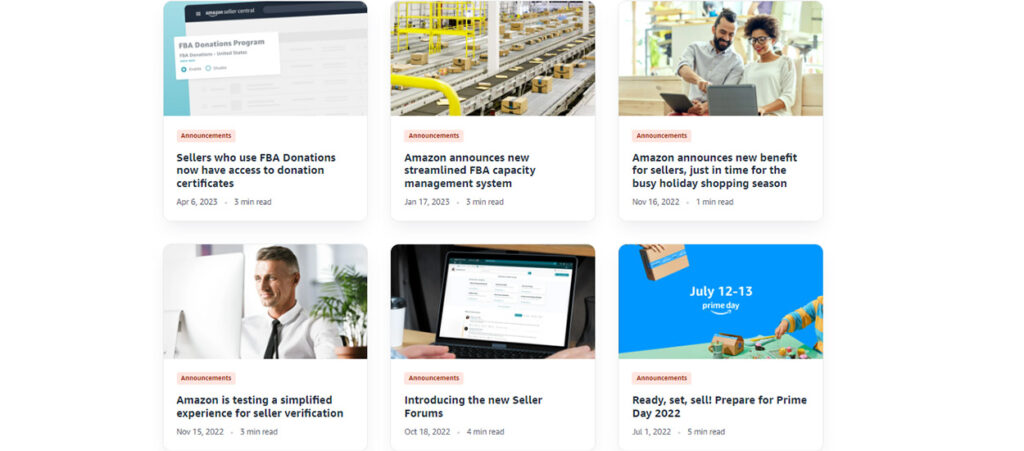
8. Plan for Logistics: Determine where you will store your products, and how you will get them to your customers. If you are using Amazon FBA (Fulfilment by Amazon), then ensure the products are prepared and shipped as directed by Amazon. If you want to learn more about “What is Fulfilment by Amazon,” please check out the previous link.
Attending Trade Shows and Exhibitions
Trade Shows and Exhibitions are the most recurrent marketing tools. B2B meetings and gatherings are not only a great opportunity for business connections and partnerships; one also gets the perfect opportunity to scout new goods on display at trade shows and exhibitions.
It’s an event that hosts all the manufacturers, wholesalers, distributors, and other players in the industry under one roof.
Research upcoming trade shows relevant to your product category or industry niche (In this link, you can find reputable Chinese trade shows).
Attend these events armed with business cards, questions about products or pricing, and an open mind for exploring new possibilities. Engage in conversations with exhibitors, gather product catalogues or samples, discuss terms of collaboration, and exchange contact information for further follow-up.
Trade shows like the Canton Fair and Global Sources Expo allow you to directly connect with manufacturers and negotiate better pricing. This is especially beneficial for those who are looking for unique or large-volume products.
Pro Tip: Trade shows are not just for purchasing products. They also provide a great way to assess the quality of suppliers and check out physical samples of the products they offer.
Something to Consider During the Buying Process
While finding reliable sources is crucial when buying products for your Amazon store, there are a few additional factors that require attention:
How to Ensure the Quality of Products?
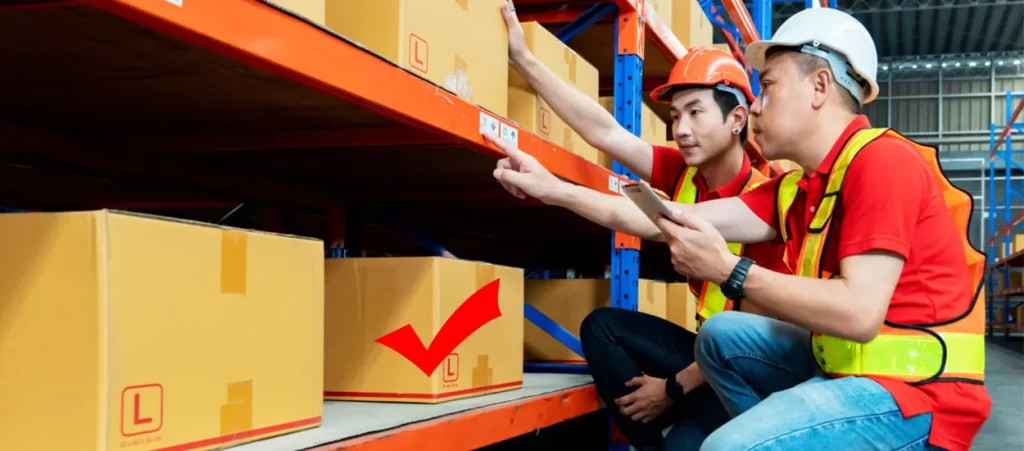
1. Researching and Selecting Suppliers:
- Research suppliers thoroughly and make a selection of only the most reliable ones. Suppliers rated highly with good reviews in previous transactions are preferred.
- Research the supplier’s background and history. When possible, visit the manufacturing facility to evaluate their processes.
How to Select the Best Supplier
Picking out the best supplier also calls for a second look into aspects such as cost, which are complemented by quality, delivery time, and even customer service. It’s always advisable to assess a supplier’s ratings, read feedback from other clients, and insist on always being given samples of the products before ordering in bulk.
2. Quality Control Inspections:
- Conduct quality control inspections. This can be done personally if you are locally sourcing, or by hiring a third-party inspection company for overseas suppliers.
- Inspections should cover product functionality, aesthetics, durability, and any other critical attributes.
3. Check Compliance with Regulations:
- Ensure your products are produced in conformance with all relevant safety and quality regulations in your target market.
- Some product categories require certifications or tests to prove that a safety standard is met.

4. Continuous Monitoring:
- Continuously monitor product quality even after you begin to sell. Periodically order your product to check whether the quality is maintained consistently.
- Send follow-up emails or surveys to the customers for direct feedback regarding the quality of the product.
5. Implement a Robust Return Policy:
- Clearly define your return policy. Not only does this instil confidence in the customers, but it will also enable you to keep track of and analyse returned products for any defects or other quality issues.
6. Stay Updated on Product Trends:
- Follow market trends and technological changes associated with your product. This will help in maintaining competitiveness in the quality and innovation aspects.
7. Build a Good Relationship with Suppliers:
- A good relationship with suppliers can ensure better cooperation regarding quality maintenance. Spell out your expectations about quality clearly and regularly.
What to Pay Attention to When Communicating with Suppliers?

-
Clarity and Detail: Ensure that you are not ambiguous, but rather specific when communicating your sentiments. Define product requirements, quality expectations, order volumes, and delivery timelines.
-
Cultural Sensitivity: If you are dealing with international suppliers, then take time to understand their culture. Being polite helps to break the barriers to effective communication and cooperation.
-
Language Barrier: Also, remember that there might be language differences or language preference concerns. Stay away from complicated and lengthy terms when drafting such messages. Thus, in some cases, hiring an interpreter or utilising translation programs may be required.
-
Response Time: Keep in mind the possibility of two participants living in different time zones. Moreover, do not expect immediate responses as some suppliers could be in different time zones than you are.
-
Build Rapport: Very often, the best relationship is built with your suppliers and may assist in the attainment of more cooperation and possibly better deals later on. Interaction and social conversations, where possible, can improve relations between people.
-
Skilled Negotiator: This is through the establishment of things like price, the minimum quantity to order, and the time of delivery. Never overprice or undersell, and be reasonable during the negotiation process so that continuity in business is guaranteed in the future.
-
Frequent Follow-Ups and Updates: It is advisable to call frequently or oftentimes to avoid lengthy waiting intervals for an order. This also demonstrates that you value the business relationship by showing attentiveness and, further, following up on the emails or messages sent.
-
Feedback and Solution Finding: Ensure to respond constructively. On the orders, it is crucial to indicate possible problems and also deliberate on how they should be solved.
-
Written Agreements: Document agreements in writing, particularly on issues such as orders, prices, and terms of delivery. This would prevent misunderstandings and serve as a point of reference for subsequent interactions.
-
Confidentiality and Trust: Establish or maintain a professional non-fraternisation policy, particularly where any violation could cloud your judgment in delivering sensitive paperwork. This positions you to be held up as a trusted business partner.
-
Understanding Capabilities and Limitations of Suppliers: Genuinely identify the talents and the weaknesses of the supplier. It could also reduce friction in the working relationship since it allows both parties to have reasonable expectations that can be met satisfactorily.
Product Safety Standards
To make certain your products meet safety and compliance requirements:
- Verify certifications from CE of Europe, FCC for electronics, or FDA for US food and cosmetics.
- Check that labelling, packaging, and materials are within the law.
How to Choose the Best Shipping Method?
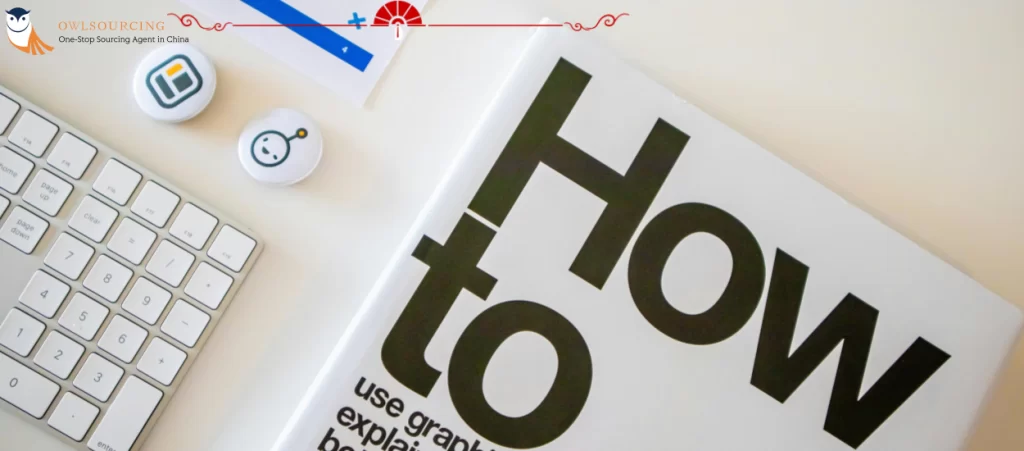
Shipping the products is also an issue to consider. We have prepared the following table to help you choose the Amazon FBA Shipping method that best suits your products.
Of course, each shipping method has its advantages and disadvantages, depending on your product.
| Air Freight VS Sea Freight VS Express Courier VS FBA | Air Freight | Sea Freight | Express Courier | Fulfilment by Amazon (FBA) |
| Cost | High due to air transport | Lower, economical for bulk shipments | Varies, generally high for fast service | Varies, includes storage and fulfilment fees |
| Speed | Very fast, suitable for urgent shipments | Slow, takes weeks to months | Fast, often the next day to a few days | Fast shipping once in Amazon’s network |
| Reliability | Generally reliable | Subject to delays (weather, port issues) | Highly reliable, with tracking | High reliability within Amazon’s system |
| Scalability | Good for scaling up quickly | Ideal for large-scale shipments | Scalable, but costs can increase | Highly scalable with Amazon’s resources |
| Geographic Reach | Global reach, good for long distances | Global, but limited to port cities | Extensive global network | Primarily focused on markets where Amazon operates |
| Goods Suitability | Best for high-value, low-volume goods | Suitable for bulky, heavy goods | Ideal for small, time-sensitive items | Depends on Amazon’s guidelines and restrictions |
| Customs and Regulations | Strict, but efficient processes | Complex, longer clearance times | Handles customs efficiently | Amazon handles customs for FBA imports |
| Tracking and Visibility | Good tracking and updates | Tracking available, less detailed | Excellent tracking and updates | Good tracking within Amazon’s network |
Advantages and Disadvantages:
- Air Freight:
- Advantages: Speed, reliability, global reach.
- Disadvantages: High cost, environmental impact, and less suitable for bulky goods.
- Sea Freight:
- Advantages: Cost-effective for large volumes, lower environmental impact.
- Disadvantages: Slow transit times, potential for delays, and less flexibility.
- Express Courier:
- Advantages: Speed, flexibility, excellent tracking.
- Disadvantages: It can be costly, and less suitable for very large shipments.
- Fulfilment by Amazon (FBA):
- Advantages: Integration with Amazon’s marketplace, scalability, and reliable shipping once in the network.
- Disadvantages: Costs can be complex, limitations based on Amazon’s guidelines, and primarily beneficial for sellers on Amazon.
Advanced Marketing Strategies
- Product Promotion Strategies: Offer limited-time promotions, utilise Amazon Pay Per Click ads, and use external traffic from various social media or blogs.
- Influencer Partnerships: Collaborate with influencers to stir interest in your product through Instagram, TikTok, YouTube, etc.
Read More:
- Amazon FBA Sourcing Agent in China: Ultimate Guide
- How to Buy from China Factory Directly: Step-by-Step Guide
- Buy from China and Sell on Amazon: Comprehensive Guide
- Amazon FBA Sourcing Agent in China
Final Thoughts
Where can you buy products to sell on Amazon? I hope this article has answered this question for you. Also, please remember that this may not be an easy process.
Choosing Owlsourcing can also help you mitigate many potential risks. They provide a complete Amazon FBA Service and are also a Dropshipping Agent. Whether it’s procurement or shipping, Owlsourcing is a great option. If you have any questions, feel free to contact us.

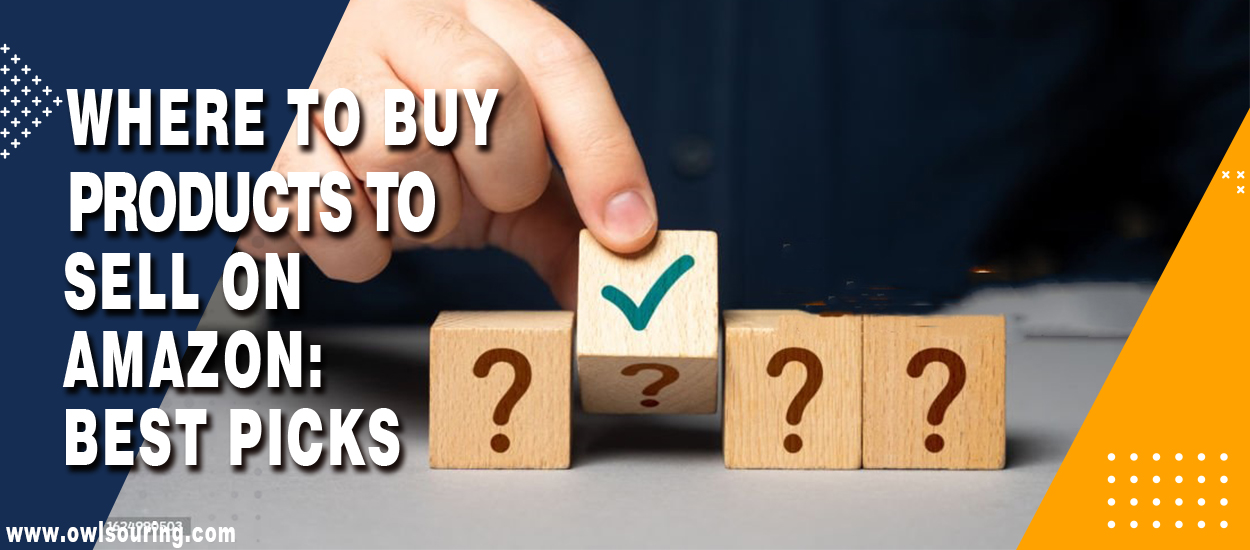

4 thoughts on “Where and How to Find the Best Products to Sell on Amazon?”
What are the best-selling products on Amazon?
Hi Cari,
The best-selling products on Amazon typically include electronics, books, clothing, home and kitchen items, and health and personal care products.
I recommend this article to you, hoping it will be helpful.
Buy from China and Sell on Amazon: Comprehensive Guide
Is it possible to sell products on Amazon without paying any fees?
Hello Geor,
No, selling products on Amazon typically involves various fees, such as subscription fees, referral fees, and fulfillment fees.
However, you can collaborate with Owlsourcing to reduce costs in procurement and shipping.👍